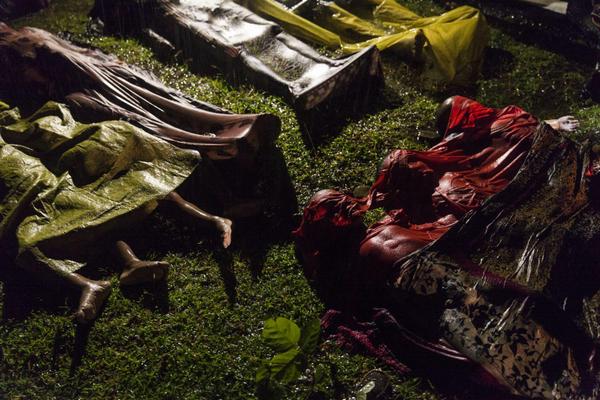Two Australian photographers, Patrick Brown and Adam Ferguson, are in the running to win the prestigious 2018 World Press Photo (WPP) Contest.
For the first time the WPP went public with the six nominees’ in consideration for the top prize, World Press Photo of the Year Award.
Pain and suffering is a theme in each of the six finalists’ images.
Warning: Graphic content
Ferguson, commissioned by the New York Times, captured a portrait of Aisha, who was kidnapped and assigned a suicide bombing mission by jihadist militant organisation, Boko Haram. The 14-year old girl managed to escape without detonating the bomb.

Photo: Adam Ferguson/NY Times. Technical details: Shutter speed 1/200; F-stop 2.0; focal length 35mm; ISO 1600.
The image – captured in Maiduguri, Nigeria – is the least confronting of the finalist photos.
Ferguson is also a finalist in the People Stories category.
Brown, commissioned by UK photo agency Panos Pictures, photographed blanket-covered dead bodies of Rohingya refugees, who drowned off the coast of Bangladesh in September 2017.
The boat which was carrying an estimated 100 Rohingya, who were attempting to flee Myanmar, capsized, leaving only 17 survivors.

Photo: Patrick Brown/Panos Pictures & Unicef. Technical details:Shutter speed 1/50; F-stop 2.8; Focal length 35mm; ISO 1600.
Brown is also a finalist in the General News Singles category.
Other finalist images are of: the aftermath of the Westminster Bridge terrorist attack in London; civilians from west Mosul lining up for aid; Iraqi Special Forces caring for a naked young boy from Mosul; and a man who caught fire during a protest in Caracas against Venezuelan president, Nicolas Maduro.
This year there were 73,044 images submitted by 4548 photographers from 125 countries.
Australian photographer, Warren Richardson, won the 2015 World Press Photo of the Year Award.
In past years the WPP has been informed of issues relating to winning photos, causing the organisation to issue clarifications, strip awards, and invest heavily in improving the system.
By publishing the six finalist images, the WPP is likely attempting to minimise the chance of post-award controversy.

